We have all been to a pet store where they keep beautiful, flowing-finned betta fish in tiny take-out plastic cups.
You may see this and think that bettas do not need much space to be happy, but the truth is that these fish cannot thrive in a small tank or bowl.
As with any pet that we choose to keep in our home, we are obligated to provide them with the best environment to ensure healthy growth and development.
For betta fish, this means providing them with a well set up tank of appropriate size, and that is a minimum of five gallons (19 l).
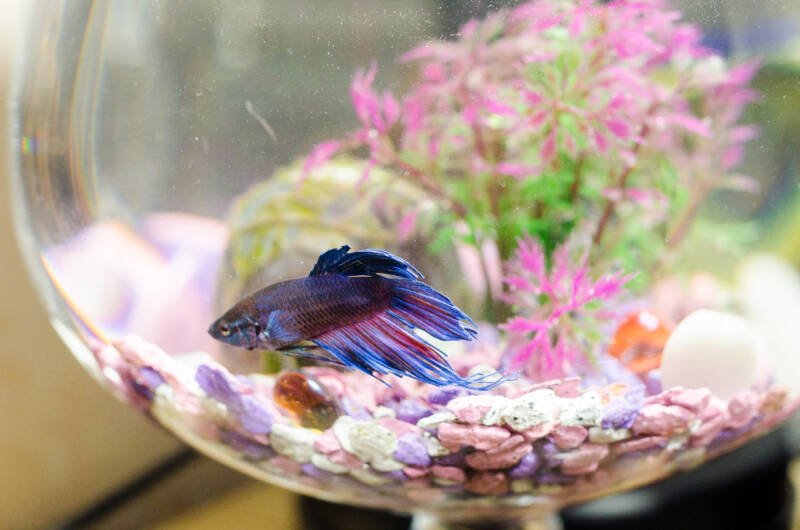
In this article
What is the Minimum Tank Size?
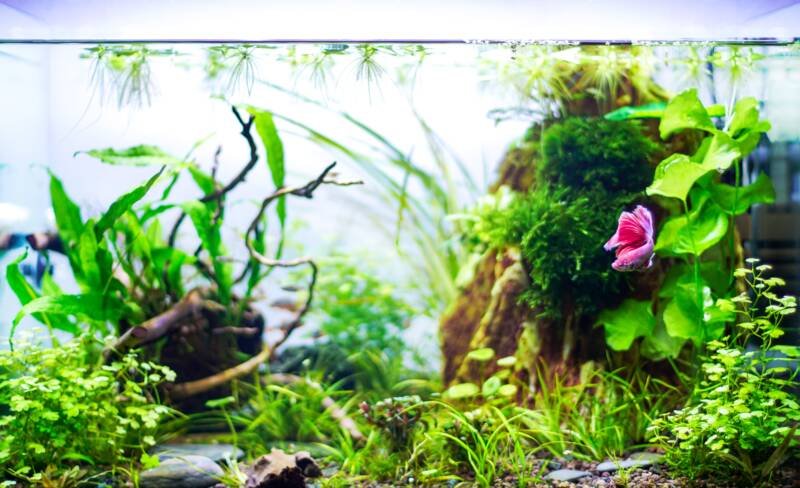
The absolute minimum betta fish tank size that you should consider is five gallons (19 l). This is the recommended size for a single male betta or female betta.
If you wish to keep a betta sorority or a male with one or more females, then you will need a larger tank.
Keep in mind that raising multiple betta fish together is best done by an aquarist with some experience. When attempting this, always have a cycled backup tank available in case the group does not get along.
Tank Size for a Betta Sorority
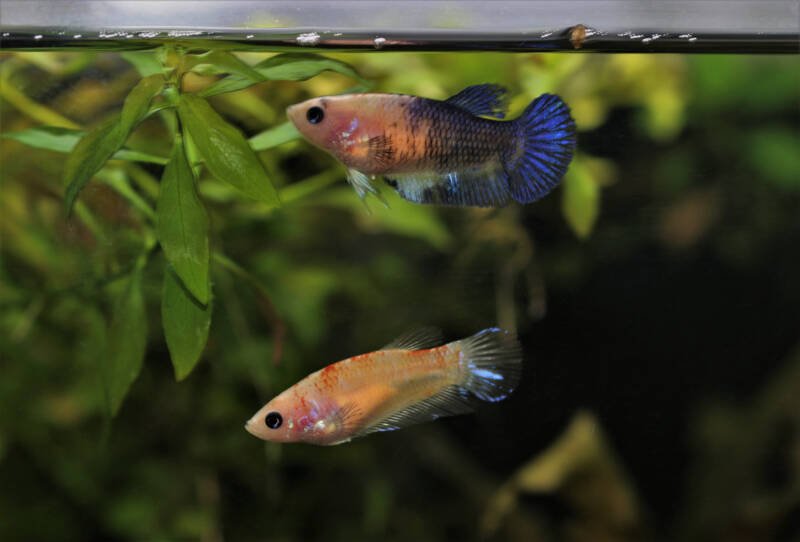
Placing multiple female bettas in a tank that is too small can be harmful to the fish.
The lack of space may cause them to fight or hide excessively. Fighting can result in injury or infection, and the long-term stress from constant fighting can weaken their immune systems.
A sorority of three to five females can be kept in a 20-gallon (76 l) tank, although 30 gallons (114 l) is even better to give them more room.
Tank Size for a Single Male and Female
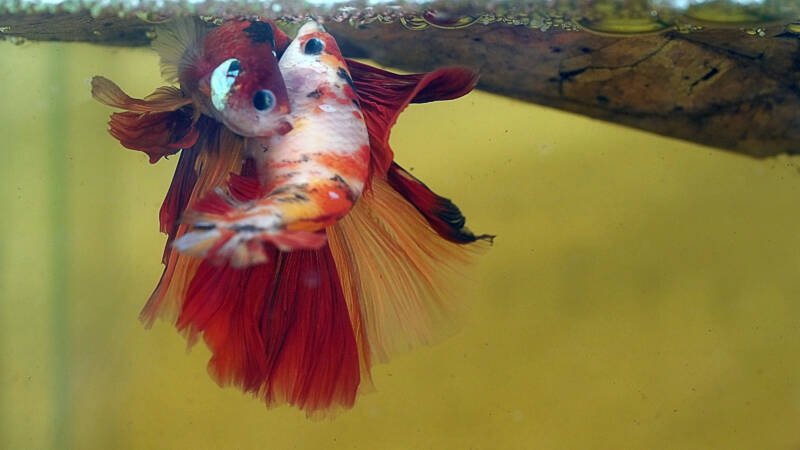
You can keep a single male with a single female in a tank size of 40 gallons (150 l). This may seem large for fish that reach a maximum adult length of 2.5 inches (6.4 cm), but there is good reason for the larger size.
When a male and female are kept together, breeding is always a possibility.
The female will need adequate space both to swim and to hide from the pursuing male occasionally. Choose a long tank and add plenty of hiding places.
Tank Size for a Single Male and Female Sorority
The minimum tank size for a male betta with a female sorority is 75 gallons (284 l).
Plan on at least 70 percent of the tank to be planted and leave the rest for other decorations that add hiding places. Set things up so that there is open swimming space.
Why is a Bigger Betta Tank Size Better?
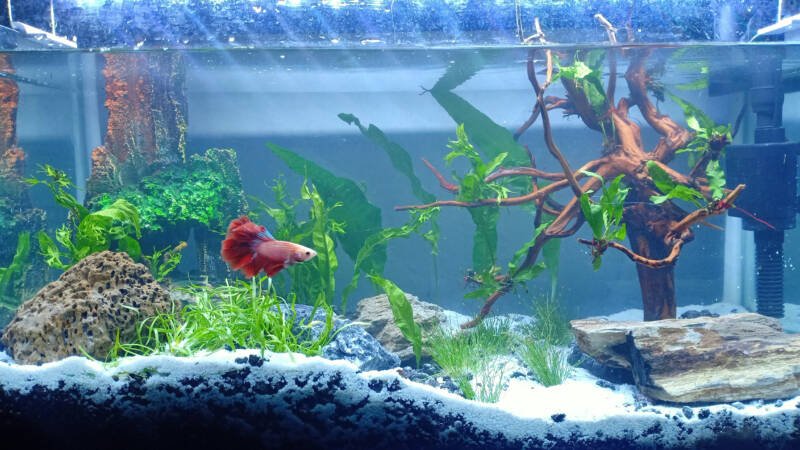
Betta fish thrive in a well-planned, appropriately sized tank. Although they are small fish, you can select as large a tank as you wish if you have the space and inclination to keep it.
The following are reasons why you might select a larger tank.
Healthier Fish
A larger tank is better for the overall health of your betta fish.
Natural Environment
You have more space to create a natural environment. Your bettas need plants, driftwood, and rocks to give them places to hide.
If you like the live plant look, try anubias, hornwort, java fern, and java moss to create a multidimensional aquascape. If you prefer artificial plants, go with soft silk varieties to protect your betta’s fins.
Lower Stress Levels
High stress levels lead to a weakened immune system, leaving your fish vulnerable to infection and illness.
More space means lower stress for your fish and a better chance to reach their full lifespan potential of three to five years.
Higher Activity Levels
A larger tank gives your bettas room to swim. Female bettas especially need this swimming space.
Because these fish come from shallow waters, a large, long tank will allow their natural, side-to-side swimming motions.
Lower Aggression Levels
In the wild, bettas select and defend a wide territory, up to three feet (90 cm) in diameter.
A larger tank gives them space to call their own. As fewer tank mates will invade this territory, your betta will not need to be as aggressive to defend it.
Easier to Maintain
Believe it or not, a larger tank is also easier to maintain.
Steady Temperature
A small tank can be prone to rapid fluctuations in temperature. Larger tanks change more slowly. Install a thermometer to monitor the temperature and use a heater to keep it within your betta’s range of tolerance.
For these fish, a water temperature between 76 and 80°F (24 and 26.6°C) is perfect.
Lower Bio Load and Better Water Conditions
The bio load, or buildup of waste material in the water column, will be more manageable due to the higher water volume. A well-cycled tank will have more stable pH, ammonia, nitrate, and nitrite levels.
Clean your filter regularly, test water parameters often, and perform weekly water changes to keep the levels under control.
You Can Add Tank Mates
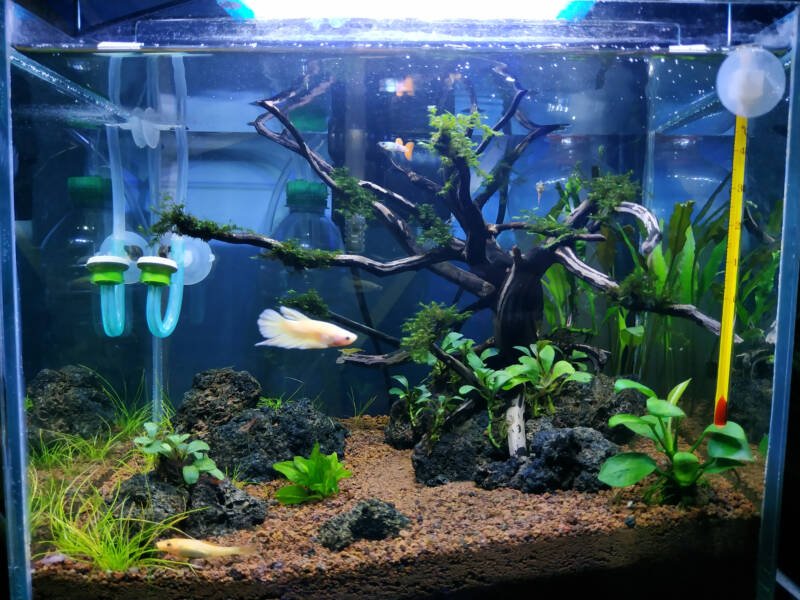
With a larger tank, you have the option to add tank mates for your betta fish.
Bettas have a reputation for aggression but pair nicely with peaceful bottom dwellers, such as catfish, loaches, plecos, and some snails and shrimp.
A large tank gives each species room and lowers the chances of negative interactions.
Tips for Tank Setup and Maintenance
Remember the following when selecting and setting up your betta tank.
Go Long Over Deep
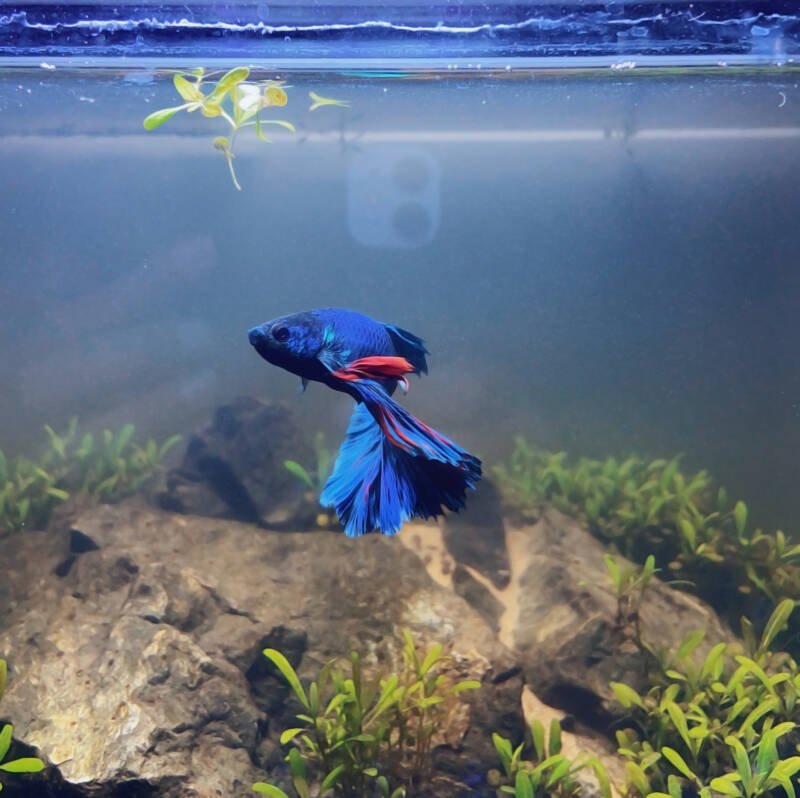
Choose a tank that is longer than it is deep. Betta fish will instinctively access the water surface to intake air using their labyrinth organ.
While they do not need to do this in a well-oxygenated tank, easy access to the surface will reduce stress for your fish.
In addition, knowing that wild betta fish live in shallow waters, a long tank allows them to swim from side to side naturally.
Decorate to Reduce Line of Sight
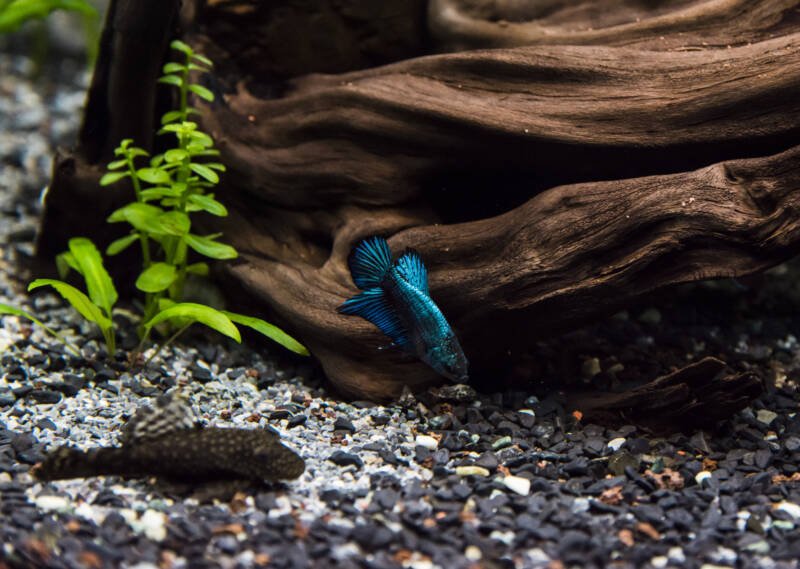
Feel free to experiment with decorating your betta tank.
Breaking up the line of sight with ornaments, live or silk plants, driftwood, or rocks minimizes the opportunities for aggression. However, make sure to set aside open space for your fish to swim.
Take into consideration the space required for tank maintenance equipment, such as heaters, thermometers, and filters. If you have a smaller tank, search for ones appropriately sized.
Consider a Divider
If for any reason, your betta fish do not get along, you can always install a tank divider. This will allow you to keep the fish in the same tank without worrying about them hurting each other.
If you have a single male with a single female, set up the divider to give the female fish more room to swim. Females need this space more than males to feel comfortable.
Do Not Forget a Lid
Betta fish can jump, especially when startled or feeding near the surface.
In the wild, these fish leap between shallow puddles. Make sure you have a tight-fitting lid for your tank to ensure your bettas do not escape.
Cycle the Aquarium Before Adding Your Betta
Always cycle your aquarium before you purchase your betta fish. The following are general steps for cycling a tank:
- Thoroughly clean the tank and check for leaks
- Select a space for your tank that is away from windows, drafts, or high-traffic areas
- Add the appropriate substrate, water, heater, and filter
- Condition and dechlorinate the water
- Allow at least 10 days for the beneficial bacteria in the tank to stabilize
- Check the water parameters before adding your betta fish.
Caring for Your Tank
The number one thing to do in caring for your betta tank is to keep it clean. Set up a schedule to perform regular maintenance.
Vacuum the gravel to rid the tank of decaying organic matter that can lead to deadly ammonia spikes.
Perform regular water changes, anywhere from 10 to 20 percent each week. Do not forget to clean the filter to remove the buildup of contaminants.
Closing Thoughts
Choosing the right size tank for your betta is a vital part of keeping a healthy and happy fish.
Remember the minimum recommended sizes for the number of fish you have, set up the tank in a way to minimize line of sight between the fish, and perform regular cleanings.
What size tank do you have for your betta fish?
Would you choose to go with a larger tank if you could?